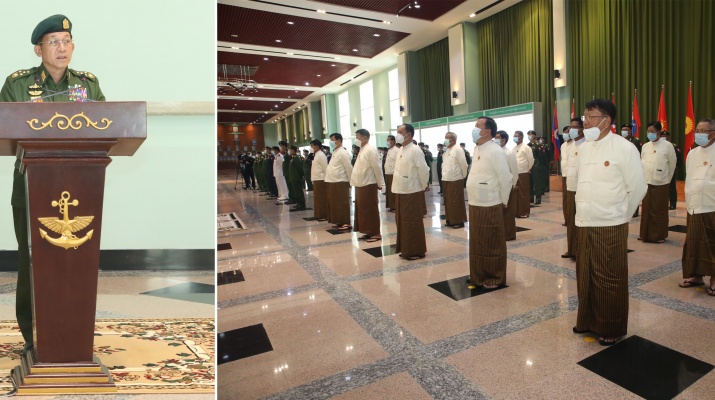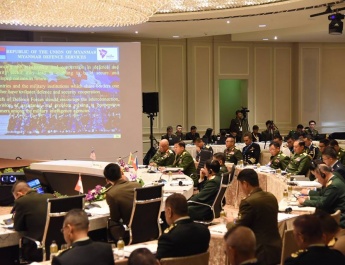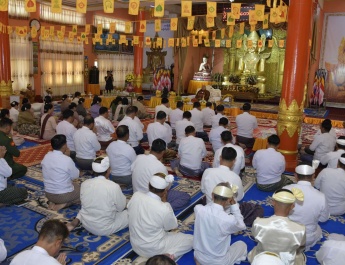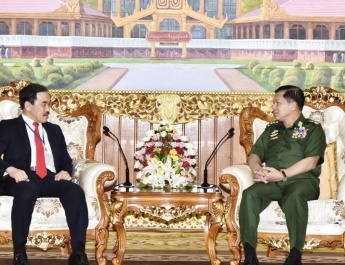Nay Pyi Taw March 25
The ceremony to open the commemorative statues of seven retired commanders-in-chief and commanders-in-chief of Defence Services who fulfilled duty in successive eras was held at the exhibition booth of the office of the curator this afternoon and Chairman of the State Administration Council Commander-in-Chief of Defence Services Senior General Min Aung Hlaing formally opened the commemorative statues.
Also present at the ceremony together with the Senior General were Vice-Chairman of the State Administration Council Deputy Commander-in-Chief of Defence Services Commander-in-Chief (Army) Vice-Senior General Soe Win, Members General Mya Tun Oo, Admiral Tin Aung San, General Maung Maung Kyaw and Lt-Gen Moe Myint Tun, Secretary Lt-Gen Aung Lin Dway and Joint Secretary Lt-Gen Ye Win Oo of the State Administration Council, Union Ministers Lt-Gen Soe Htut and Lt-Gen Tun Tun Naung, Chief of the General Staff (Army, Navy and Air) General Maung Maung Aye, Commander-in-Chief (Navy) Admiral Moe Aung, senior military officers from the Office of the Com-mander-in-Chief, retired senior military officers, the commander of Nay Pyi Taw Command and officials.
First, the Senior General delivered a speech, saying, “The sustainability of independence and perpetuation of sovereignty of a country rest entirely on the armed forces of that country and the long-term existence of the Tatmadaw mainly depends on the consistent respect for fine traditions of the Tatmadaw. The more than 1,000-year history of Myanmar has vividly proved that the country was powerful when the Tatmadaw was strong and the country was in chaos when the Tatmadaw was weak and disunited. It is an undeniable reality no one can deny that ‘Only when the Tatmadaw is strong, will the country be strong’. During the 75-year period since the formation of the Tatmadaw, the reputation of the Tatmadaw has grown without being tarnished despite the changes in its names, leaders, commanders and personnel and in shouldering of duty in successive eras due to the respect for fine traditions of the Tatmadaw led by Commanders-in-Chief and Commanders-in-chief of Defence Services. The Tatmadaw has been standing as a major national force thanks to fine traditions laid down by Bogyoke Aung San and thirty comrades, who founded the Tatmadaw, and nurtured by successive leaders and commanders consistently.
There have been eight commanders-in-chief and commanders-in-chief of Defence Services, who shouldered and has shouldered duty in the Tatmadaw, since regaining independence, including Lt-Gen Smith Dun, General Ne Win, General San Yu, General Tin Oo, General Thura Kyaw Htin, Senior General Saw Maung, Senior General Than Shwe and I myself, who is still carrying out the duty. To present the brief account of the performance of duty by preceding Commanders-in-chief and commanders-in-chief of Defence Services, Lt-Gen Smith Dun joined the Tatmadaw on 8 November 1924 and rose through the ranks until becoming the Commander-in-chief in 1945, and retired from the Tatmadaw on 31 January 1949.
Thakin Shu Maung (a) General Ne Win was one of the thirty comrades who contacted the Japanese and urgently underwent basic military training after the start of the second World War. Lieutenant Ne Win discharged duty as the commander of internal insurgency column when the Burma Independence Army (BIA) entered Myanmar in four columns after founding the BIA in Bangkok, Thailand, on 27 December 1941. He rose through the ranks during the revolution and discharged duty as the prime minister during the period of the Caretaker Government from 1958 to 1960. In 1962, he discharged duty as the chairman of the Revolutionary Council and retired from the Tatmadaw on 20 April 1972. He fulfilled duty as the president from 1974 to 1981 and the Chairman of the Burma Socialist Programme Party (BSPP) from 10 November 1981 to 23 July 1988 before retiring.
General San Yu joined the BIA in 1942 and rose through the ranks until becoming the deputy commander-in-chief (Army) in 1963 and the commander-in-chief, the minister of defence and deputy prime minister during the period from 20 April 1972 to 7 March 1974 after being promoted to the rank of general. After retiring from the Tatmadaw on 7 March 1974, he performed duty as the secretary of the State council, minister for finance and revenue and minister for national planning and general secretary of the central committee of BSPP. He became the chairman of the disciplinary committee of the party, the chairman of the State council and the president in the same year. He retired from the posts on 25 July 1988.
General Tin Oo joined the Tatmadaw on February 26 in 1946 and served duties at respective levels.
He served duties of Commander-in-Chief as a general on March 8 in 1974 and retired from the Tatmadaw on March 6 in 1976. General Thura Kyaw Htin joined Burma Defence Army (BDA) in 1943 as private and served duties at different levels.
Then, in 1969, he became the commander of Yangon Command, deputy commander-in-chief (army), and commander-in-chief of Defence Services as a general on March 6, 1976. He then retired from the Tatmadaw on November 4 in 1985.
Senior General Saw Maung joined the Tatmadaw on December 23 in 1949 and served duties at respective levels. And then, he became the commander-in-chief as a lieutenant general beginning from 4 November 1985. He was promoted to a general in 1986. He served as Chairman of State Law and Order Restoration Council and Commander-in-Chief of Defence Services beginning from September 18, 1988. In 1990, he was promoted to Senior General, he then retired from the Tatmadaw on April 24 in 1992.
Senior General Than Shwe took the 9th Intake of Officers Training School-OTS in 1952 and served duties at respective levels. In 1983, he became the commander of Southwest Command, served duties as the deputy commander-in-chief (Army) in 1985, as a maj-general in 1986, and got promoted to lieutenant general in 1987. And then, he was appointed as deputy defence minister in 1988 and on September 18, 1988, as vice-chairman of the then State Law and Order Restoration Council. In 1990, he was promoted to a general and served duties as deputy Commander-in-Chief of Defence Services and commander-in-chief (Army). He started serving duties as chairman of the State Law and Order Restoration Council on April 24 in 1992 as well as prime minister, defence minister and Commander-in-Chief of Defence Services at the same time. On April 23, 1993, he got promoted to Senior General and then retired from the Tatmadaw on March 30, 2011.
The tradition of Tatmadaw’s leading role in national affairs has ever been so high that it is matchless. The Tatmadaw has been playing a leading role in building and developing the nation. It is an institution that wins the trust of the people as a reliable organization that fulfills the national requirements. As such, those who have maintained the fine tradition of Tatmadaw are commanders-in-chief and commander-in-chief of Defence Services.
Honouring these dignitaries who lead the Tatmadaw to be strong as commander-in-chief and commander-in-chief of Defence Services, such splendid statutes are on display at Defence Services Museum in order that next new generation will always remember them. He made a wish that being on display of these statutes at the museum is aimed that the next generation will keep in mind that they love nation’s independence and they will make efforts for development of the nation with a sense of patriotism. He also made a wish on sustainable development of human resources for making the nation peaceful, stable and developed country.
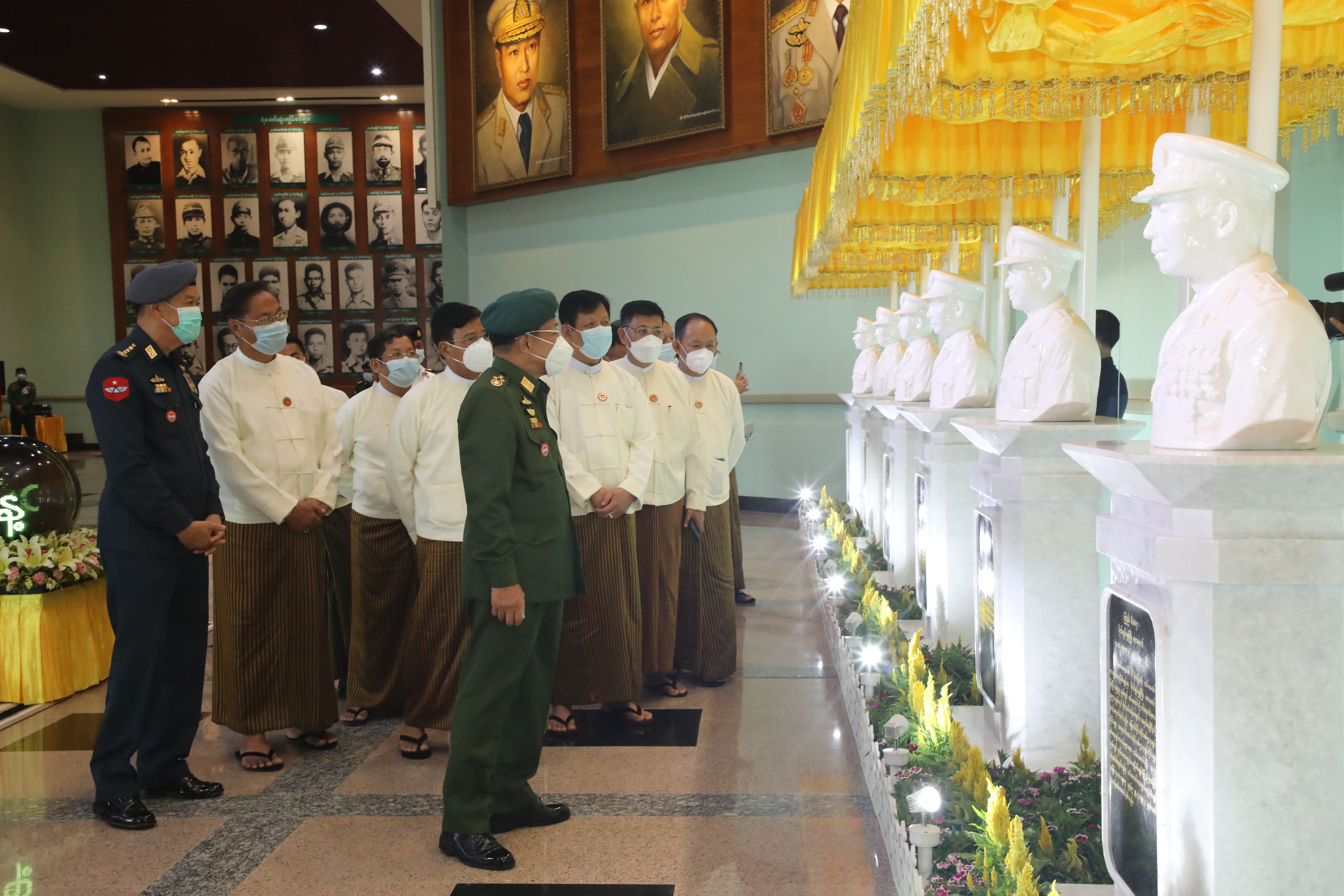
And then, the Senior General unveiled seven statues of commanders-in-chief and commanders-in-chief of Defence Services. The guard of honour saluted the statues by playing the trumpet.
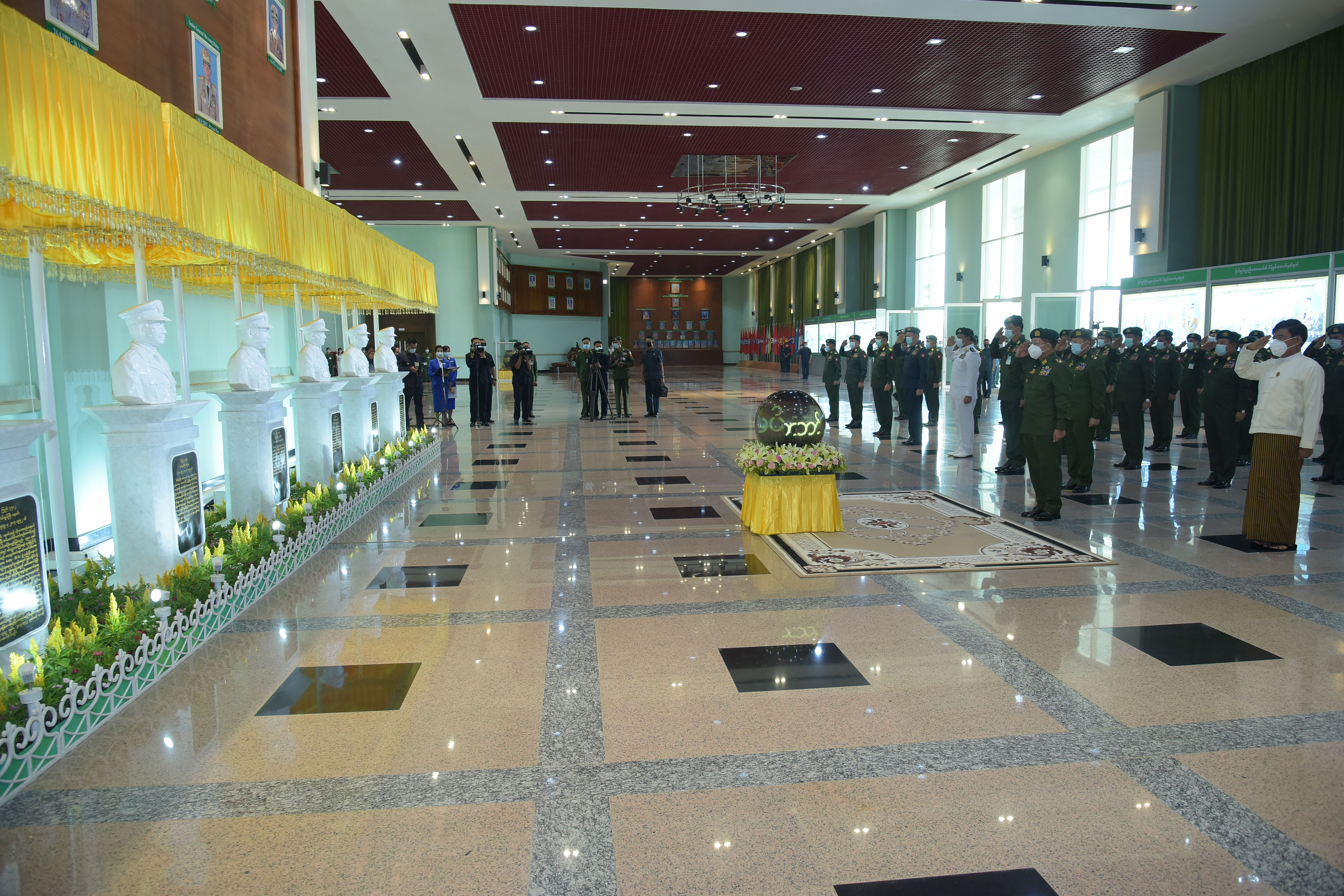
Then, the Senior General and the invited dignitaries viewed the statutes of commanders-in-chief and commanders-in-chief of Defence Services (retired) on display at the museum and booths prepared for the 76th Anniversary of Armed Forces Day Exhibition.
The statues of commander-in-chief of Defence Services (retired) are designed with use of 3D graphic computer software based on film photos following the handicraft arts to finish them. They are 24 inches in height, 12 inches in length and 10.5 inches in width.


